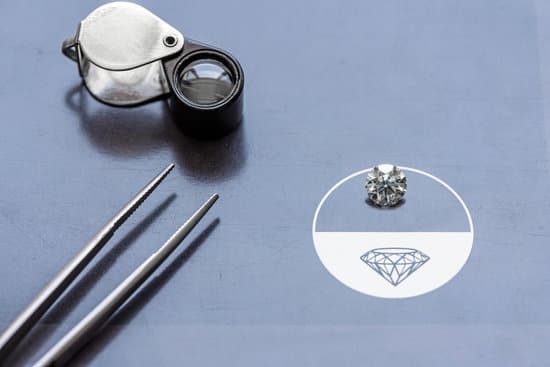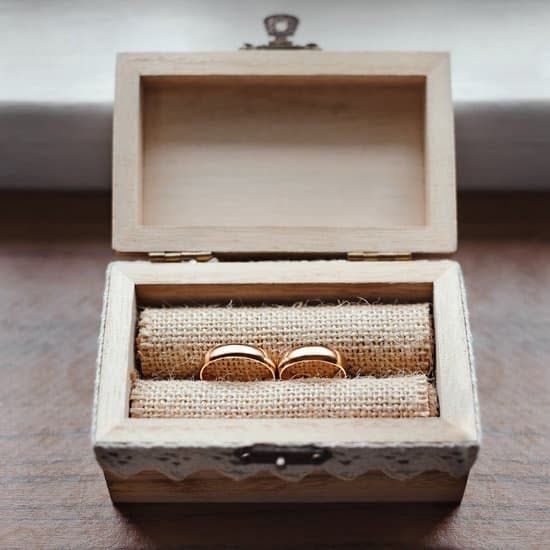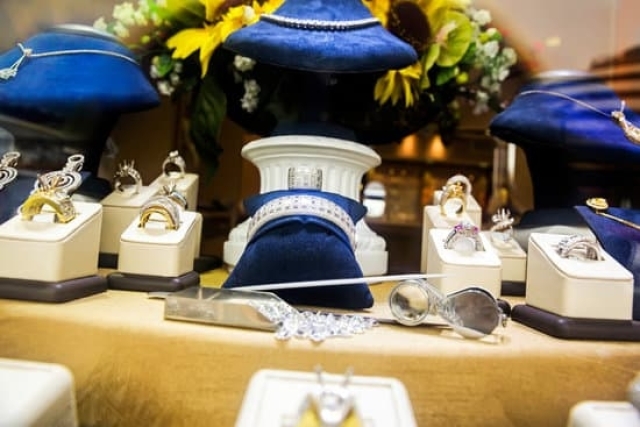Fine jewelry clasps are an essential component of any piece of jewelry, providing the security and stability needed to keep bracelets, necklaces, and other accessories in place. Knowing how to fasten fine jewelry clasp properly is crucial for maintaining the integrity of your precious pieces.
This article will provide an overview of different types of clasps, the importance of properly fastening them, a step-by-step guide on proper technique, common mistakes to avoid, tools and accessories that can assist with fastening, and tips on maintenance.
Properly fastening fine jewelry clasps is vital in ensuring that your favorite pieces stay secure and well-maintained. Whether it’s a lobster clasp, spring ring clasp, or box clasp, each type requires specific handling to ensure it functions as intended. Failing to do so can lead to potential damage or loss of your jewelry items. Therefore, understanding the significance of correctly securing these clasps is key in preserving the longevity and beauty of your cherished accessories.
In the following sections, we will delve into the various types of fine jewelry clasps and their pros and cons, as well as the impact of not fastening them properly on the security and lifespan of the jewelry piece. Additionally, we will provide a detailed step-by-step guide on how to properly fasten different types of clasps along with tips and tricks for handling difficult ones.
By learning about these various aspects, you can ensure that your fine jewelry stays safe and secure.
Types of Fine Jewelry Clasps
When it comes to fine jewelry, the clasp is a crucial component that ensures the security and longevity of your precious pieces. There are various types of clasps available, each with its own set of pros and cons. Understanding the different types can help you choose the right clasp for your jewelry and properly fasten it to avoid any mishaps.
Here is an overview of the most common types of fine jewelry clasps:
- Lobster Clasp: This type of clasp is popular for its ease of use and secure closure. It features a spring-loaded mechanism that opens and closes with a small lever.
- Spring Ring Clasp: Similar in function to the lobster clasp, the spring ring clasp is also easy to use and provides a secure closure. It consists of a small ring with a spring mechanism that latches onto a tiny open ring.
- Box Clasp: This type of clasp offers a sleek and stylish closure for bracelets and necklaces. It consists of two parts that slide into one another and lock securely in place.
- Toggle Clasp: Known for its decorative appeal, the toggle clasp features a bar that is threaded through a circular loop to create a secure closure.
While each type of clasp has its advantages, it’s important to consider the specific needs of your jewelry piece when choosing the right clasp. For instance, if you have dexterity issues or prefer an easy-to-use clasp, a lobster or spring ring clasp might be your best option. On the other hand, if you want an ornate and stylish closure for your bracelet or necklace, a box or toggle clasp might be more suitable.
Ultimately, understanding the various types of fine jewelry clasps can help you make an informed decision when purchasing new pieces or replacing existing clasps. The next section will provide detailed instructions on how to properly fasten these different types of clasps to ensure the security of your jewelry.
Importance of Properly Fastening Fine Jewelry Clasp
Fine jewelry clasps are an essential component of any piece of fine jewelry. They are the mechanism that ensures the security and longevity of the jewelry piece when worn. Properly fastening a fine jewelry clasp is crucial to prevent loss or damage to the jewelry. Whether it’s a necklace, bracelet, or anklet, ensuring that the clasp is securely fastened will give you peace of mind while wearing your precious jewelry.
Impact of Not Fastening Jewelry Clasps Properly
Not fastening your fine jewelry clasp properly can have detrimental consequences. For instance, if a necklace clasp is not securely fastened, there is a risk of it falling off and getting lost. Moreover, not properly securing a bracelet clasp can result in damage to the piece if it gets caught on something and breaks. Additionally, improperly fastened clasps can also lead to tangling and knotting of delicate chains or strands, causing frustration and potential damage to the jewelry.
Ensure Security and Longevity of the Jewelry Piece
Properly fastening fine jewelry clasps guarantees the security and longevity of your beloved pieces. When you take the time to ensure that each clasp is securely fastened, you reduce the risk of experiencing loss or damage to your jewelry. This simple step can make a significant difference in maintaining the integrity and beauty of your fine jewelry for years to come.
Now that it’s clear why properly fastening fine jewelry clasps is so important for both security and longevity, let’s explore how to effectively accomplish this task for different types of clasps.
Step-by-Step Guide on How to Fasten Fine Jewelry Clasp
Fine jewelry clasps are essential components of any jewelry piece as they ensure the security and longevity of the item. Fastening them properly is crucial in order to prevent the loss or damage of your precious jewelry. Below, we provide a step-by-step guide on how to fasten different types of fine jewelry clasps for a secure and stylish wear.
- Lobster Clasp: Hold the clasp with your thumb and forefinger, then use your other hand to push down on the small lever until it opens. Once you have attached the clasp to the jump ring on the other end of your necklace or bracelet, release the lever to securely close it.
- Spring Ring Clasp: To open this type of clasp, simply pull back on the small lever and slide in the chain or jump ring. Release the lever to close it securely.
- Box Clasp: Slide one end into the slot until you hear a click, indicating that it is securely in place. To open it, press both buttons located on each side of the clasp simultaneously and gently pull apart.
It’s important to ensure that each type of fine jewelry clasp is fastened correctly in order to prevent any accidents or loss of your beautiful pieces. One common mistake people make when fastening clasps is not securing them well enough, leading to accidental opening and potential loss. It’s also important to avoid forcing or tugging at stuck clasps, as this can cause damage to both the clasp and the jewelry piece itself.
Using a magnifying glass can be helpful if you’re struggling with small or intricate clasps. Additionally, there are tools such as jewelry pliers that can assist in securing certain types of clasps more easily, especially for those with dexterity issues. These tools and accessories can make fastening fine jewelry clasps much easier and more convenient for all individuals, ensuring a secure wearing experience.
Common Mistakes When Fastening Fine Jewelry Clasp
When it comes to fastening fine jewelry clasps, there are common mistakes that people often make, which can compromise the security and longevity of their jewelry pieces. Understanding these mistakes and knowing how to avoid them is crucial for maintaining the integrity of your jewelry. Below are some of the most common errors to watch out for when fastening fine jewelry clasps:
Not Ensuring a Secure Closure
One of the most common mistakes when fastening fine jewelry clasps is not ensuring that the closure is secure. Whether it’s a lobster clasp, spring ring clasp, or box clasp, failing to properly close the clasp can result in the piece falling off and getting lost. It’s important to take the time to double-check that the clasp is fully closed and secure before wearing your jewelry.
Forcefully Closing Difficult Clasps
Another mistake that many people make is forcefully closing difficult clasps. This can result in damage to the clasp or the jewelry itself. Instead of using brute force, it’s important to understand the specific mechanics of each type of clasp and handle them delicately but firmly.
Improper Alignment of Clasp Components
Improper alignment of clasp components is another common mistake that can lead to issues with fastening fine jewelry clasps. Whether it’s misaligning the hook with the ring or not ensuring that all components are properly engaged, improper alignment can cause the clasp to come undone easily. Taking the time to align all components correctly before securing the clasp is essential.
By being aware of these common mistakes and taking steps to avoid them, you can ensure that your fine jewelry clasps are fastened securely, ultimately prolonging the life and beauty of your cherished pieces.
Tools and Accessories for Easy Clasp Fastening
Fine jewelry clasps can sometimes be tricky to fasten, especially for individuals with limited dexterity or mobility. Fortunately, there are tools and accessories available that can make the process much easier.
One such tool is a jewelry clasp helper, which is a small device with a hook on one end that helps hold one side of the clasp in place while you secure the other side. This can be especially helpful for bracelets and necklaces with small clasps that can be challenging to hold onto.
Another useful accessory for fastening jewelry clasps is a magnetic clasp converter. This tool allows you to convert standard clasps into magnetic ones, making it much simpler to put on and take off your jewelry. Magnetic clasps are particularly beneficial for those with arthritis or other conditions that make it difficult to manipulate traditional clasps.
Additionally, using a pair of fine-tipped tweezers can also assist in fastening jewelry clasps, particularly when dealing with tiny spring ring clasps or lobster clasps. The tweezers allow for better grip and control when securing the clasp, reducing the risk of dropping or fumbling with the jewelry piece.
These tools and accessories are designed to simplify the process of fastening fine jewelry clasps, making it more convenient and accessible for everyone regardless of any physical limitations they may have.
| Tools/Accessories | Use |
|---|---|
| Jewelry Clasp Helper | Holds one side of clasp in place while securing the other side |
| Magnetic Clasp Converter | Converts standard clasps into magnetic ones for easier manipulation |
| Fine-Tipped Tweezers | Provides better grip and control when securing tiny spring ring or lobster clasps |
Maintenance of Fine Jewelry Clasp
Fine jewelry clasps are an essential component of any piece of jewelry, as they ensure that the item stays secure and in place when worn. However, it is not enough to simply fasten a jewelry clasp – it also needs proper maintenance to ensure its longevity and functionality.
One way to maintain a fine jewelry clasp is by regularly cleaning and inspecting it. This can prevent dirt, dust, and other debris from accumulating in the clasp, which can affect its ability to close properly. Use a soft cloth to wipe down the clasp, and if necessary, use a small brush or cotton swab to clean hard-to-reach areas.
Storing your fine jewelry properly is also important for maintaining the condition of the clasp. Make sure to keep your jewelry pieces in a safe and dry place, away from direct sunlight or extreme temperatures. Additionally, storing each piece separately can minimize the risk of clasps getting tangled or scratched.
Another aspect of fine jewelry clasp maintenance is periodic inspection for wear and tear. Clasps are subject to regular use and movement, so it’s crucial to check them for any signs of damage or weakening. If you notice any issues with the clasp, such as looseness or difficulty in opening and closing it, take your piece to a professional jeweler for assessment and potential repair.
| Maintenance Tips | Recommendations |
|---|---|
| Cleaning | Regularly clean the clasp with a soft cloth and inspect for debris |
| Storage | Store jewelry in a safe, dry place away from direct sunlight and extreme temperatures |
| Inspection | Periodically check clasps for wear and tear; Seek professional help if necessary |
Conclusion
In conclusion, properly fastening fine jewelry clasps is paramount to the security and longevity of your precious pieces. Whether you have a lobster clasp, spring ring clasp, or box clasp, it is essential to take the time to learn the correct technique for fastening each type of clasp. Not only does this ensure that your jewelry stays in place and doesn’t get lost, but it also helps prevent wear and tear on the clasps themselves.
By following a step-by-step guide on how to fasten different types of clasps and learning about common mistakes to avoid, you can prolong the life of your fine jewelry. Additionally, using tools or accessories specifically designed for clasp fastening can make the process much easier and more convenient. It’s worth investing in these items to ensure that you can quickly and securely fasten your jewelry every time you wear it.
In summary, taking care of your fine jewelry clasps through proper maintenance and storage practices will help them continue to function as intended. By following these recommendations and tips, you can enjoy your precious pieces for years to come, knowing that they are secure and well-cared for. So take the time to learn how to fasten fine jewelry clasps correctly – it will make a world of difference in preserving your valued accessories.
Frequently Asked Questions
How Do You Attach a Clasp to a Thin Chain?
Attaching a clasp to a thin chain involves using jump rings, pliers, and the actual clasp itself. First, open the jump ring using the pliers and loop it through the last link of the chain.
Then, attach the clasp to the jump ring and close it tightly using the pliers. This ensures that the clasp is securely attached to the thin chain without causing any damage.
What Is the Most Secure Type of Clasp?
The most secure type of clasp is generally considered to be a lobster claw clasp. This type of clasp has a spring-loaded lever that opens and closes, providing a strong and reliable closure for necklaces and bracelets. Its design makes it less likely to accidentally come undone compared to other types of clasps.
How Do You Tie a Clasp on Jewelry?
Tying a clasp on jewelry typically involves using various knots depending on the type of jewelry and materials used. For example, a basic overhand knot can be used for leather or cord jewelry, while adjustable knots like sliding knots are often used for adjustable bracelets or necklaces.
It’s important to ensure that the knot is tight and secure to prevent the clasp from coming undone during wear.

Welcome to my jewelry blog! My name is Sarah and I am the owner of this blog.
I love making jewelry and sharing my creations with others.
So whether you’re someone who loves wearing jewelry yourself or simply enjoys learning about it, be sure to check out my blog for insightful posts on everything related to this exciting topic!





